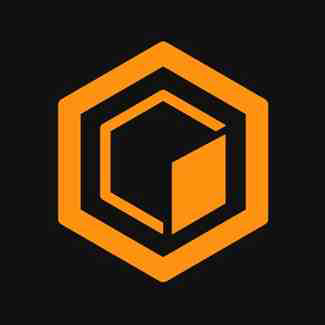Bitget:全球日交易量排名前 4!
BTC 市占率62.47%
Bitget 新幣上架 : Pi Network
BTC/USDT$85320.00 (+1.89%)恐懼與貪婪指數43(恐懼)
山寨季指數:0(比特幣季)
盤前交易幣種PAWS,WCT比特幣現貨 ETF 總淨流量:-$1M(1 天);-$872.6M(7 天)。Bitget 新用戶立享 6,200 USDT 歡迎禮包!立即領取
到 Bitget App 隨時隨地輕鬆交易!立即下載
Bitget:全球日交易量排名前 4!
BTC 市占率62.47%
Bitget 新幣上架 : Pi Network
BTC/USDT$85320.00 (+1.89%)恐懼與貪婪指數43(恐懼)
山寨季指數:0(比特幣季)
盤前交易幣種PAWS,WCT比特幣現貨 ETF 總淨流量:-$1M(1 天);-$872.6M(7 天)。Bitget 新用戶立享 6,200 USDT 歡迎禮包!立即領取
到 Bitget App 隨時隨地輕鬆交易!立即下載
Bitget:全球日交易量排名前 4!
BTC 市占率62.47%
Bitget 新幣上架 : Pi Network
BTC/USDT$85320.00 (+1.89%)恐懼與貪婪指數43(恐懼)
山寨季指數:0(比特幣季)
盤前交易幣種PAWS,WCT比特幣現貨 ETF 總淨流量:-$1M(1 天);-$872.6M(7 天)。Bitget 新用戶立享 6,200 USDT 歡迎禮包!立即領取
到 Bitget App 隨時隨地輕鬆交易!立即下載



TON Token 價格TON
未上架
報價幣種:
TWD
數據來源於第三方提供商。本頁面和提供的資訊不為任何特定的加密貨幣提供背書。想要交易已上架幣種? 點擊此處
NT$43.47+145.05%1D
價格
TON Token 價格走勢圖(TON/TWD)
最近更新時間 2025-04-12 21:33:12(UTC+0)
市值:--
完全稀釋市值:--
24 小時交易額:NT$9,495,130.76
24 小時交易額/市值:0.00%
24 小時最高價:NT$96.85
24 小時最低價:NT$16.65
歷史最高價:NT$1,025.33
歷史最低價:NT$0.04737
流通量:-- TON
總發行量:
5,047,558,527.7TON
流通率:0.00%
最大發行量:
5,047,558,527.7TON
以 BTC 計價:0.{4}1572 BTC
以 ETH 計價:0.0008137 ETH
以 BTC 市值計價:
--
以 ETH 市值計價:
--
合約:
0x6a6c...b8c520a(Ethereum)
您今天對 TON Token 感覺如何?
注意:此資訊僅供參考。
TON Token (TON) 簡介
尋找一種去中心化的加密貨幣投資方式?TON Token 可能會引起您的興趣。作為加密行業的重要一員,TON Token 在繁忙的加密市場中嶄露頭角。讓我們來看看這種加密貨幣的歷史重要性和關鍵特點。
首先,值得注意的是,TON Token 是基於開源平台Telegram的通證。Telegram 是一個廣受歡迎的即時通訊應用程序,其創始人Pavel Durov 認識到加密貨幣的潛力並推出了TON Token。
跳出傳統的中央機構,TON Token 建立在先進的區塊鏈技術之上,該技術稱為「The TON Blockchain」。這個區塊鏈系統具有極高的安全性和隱私性,這使得每一筆交易都能被追蹤並保護用戶的資金安全。
此外,TON Token 的核心特點之一是其高度靈活的交易系統。這種加密貨幣具有高速處理交易的能力,甚至可以達到每秒數百萬筆交易的速度。這讓用戶能夠在幾秒鐘內完成交易,節省了寶貴的時間,並提高了交易效率。
不僅如此,TON Token 還透過智能合約提供了更多的交易選擇。這意味著用戶可以根據自己的需求進行定制化的交易,從而實現更多的投資策略。
然而,正如任何投資都存在風險一樣,投資TON Token 也不例外。加密貨幣市場的波動性極高,價格可能會受到各種因素的影響。因此,在投資TON Token 之前,建議您進行充分的研究,了解風險並諮詢專業人士的意見。
總的來說,TON Token 在加密貨幣領域展現出了其獨特性和重要性。其基於先進的區塊鏈技術,高效的交易系統以及智能合約功能,使得TON Token 成為一個值得關注的投資選擇。然而,在進行任何加密貨幣投資之前,始終請謹慎思考並諮詢相關專業人士的意見。
TON Token 的 AI 分析報告
今日加密市場熱點查看報告
今日 TON Token 價格 TWD
今日 TON Token 即時價格為 NT$43.47 TWD,目前市值為 NT$0.00。過去 24 小時內,TON Token 價格漲幅為 145.05%,24 小時交易量為 NT$9.50M。TON/TWD(TON Token 兌換 TWD)兌換率即時更新。
TON Token 價格歷史(TWD)
過去一年,TON Token 價格上漲了 +2381.66%。在此期間, 兌 TWD 的最高價格為 NT$1,025.33, 兌 TWD 的最低價格為 NT$0.04737。
時間漲跌幅(%) 最低價
最低價 最高價
最高價 
 最低價
最低價 最高價
最高價 
24h+145.05%NT$16.65NT$96.85
7d+25.80%NT$0.6549NT$107.67
30d+3921.16%NT$0.04737NT$133.9
90d+382.06%NT$0.04737NT$175.19
1y+2381.66%NT$0.04737NT$1,025.33
全部時間+1480.62%NT$0.04737(2025-03-29, 15 天前 )NT$1,025.33(2024-09-26, 199 天前 )
TON Token 的最高價格是多少?
TON Token 兌換 TWD 的歷史最高價(ATH)為 NT$1,025.33,發生於 2024-09-26。相較於 TON Token 歷史最高價,目前 TON Token 價格回撤了 95.76%。
TON Token 的最低價格是多少?
TON Token 兌換 TWD 的歷史最低價(ATL)為 NT$0.04737,發生於 2025-03-29。相較於 TON Token 歷史最低價,目前 TON Token 價格上漲了 91671.81%。
TON Token 價格預測
TON 在 2026 的價格是多少?
根據 TON 的歷史價格表現預測模型,預計 TON 的價格將在 2026 達到 NT$13.97。
TON 在 2031 的價格是多少?
2031,TON 的價格預計將上漲 +34.00%。 到 2031 底,預計 TON 的價格將達到 NT$33.08,累計投資報酬率為 +43.79%。
常見問題
TON Token 的目前價格是多少?
TON Token 的即時價格為 NT$43.47(TON/TWD),目前市值為 NT$0 TWD。由於加密貨幣市場全天候不間斷交易,TON Token 的價格經常波動。您可以在 Bitget 上查看 TON Token 的市場價格及其歷史數據。
TON Token 的 24 小時交易量是多少?
在最近 24 小時內,TON Token 的交易量為 NT$9.50M。
TON Token 的歷史最高價是多少?
TON Token 的歷史最高價是 NT$1,025.33。這個歷史最高價是 TON Token 自推出以來的最高價。
我可以在 Bitget 上購買 TON Token 嗎?
可以,TON Token 目前在 Bitget 的中心化交易平台上可用。如需更詳細的說明,請查看我們很有幫助的 如何購買 指南。
我可以透過投資 TON Token 獲得穩定的收入嗎?
當然,Bitget 推出了一個 策略交易平台,其提供智能交易策略,可以自動執行您的交易,幫您賺取收益。
我在哪裡能以最低的費用購買 TON Token?
Bitget提供行業領先的交易費用和市場深度,以確保交易者能够從投資中獲利。 您可通過 Bitget 交易所交易。
TON Token 持幣分布集中度
巨鯨
投資者
散戶
TON Token 地址持有時長分布
長期持幣者
游資
交易者
coinInfo.name(12)即時價格表

全球 TON Token 價格
目前 TON Token 用其他貨幣計價是多少?最近更新時間:2025-04-12 21:33:12(UTC+0)
TON 兌換 MXN
Mexican Peso
$27.27TON 兌換 GTQGuatemalan Quetzal
Q10.34TON 兌換 CLPChilean Peso
$1,323.2TON 兌換 UGXUgandan Shilling
Sh4,925.06TON 兌換 HNLHonduran Lempira
L34.72TON 兌換 ZARSouth African Rand
R25.69TON 兌換 TNDTunisian Dinar
د.ت4.03TON 兌換 IQDIraqi Dinar
ع.د1,755.68TON 兌換 TWDNew Taiwan Dollar
NT$43.47TON 兌換 RSDSerbian Dinar
дин.138.58TON 兌換 DOPDominican Peso
$83.48TON 兌換 MYRMalaysian Ringgit
RM5.94TON 兌換 GELGeorgian Lari
₾3.69TON 兌換 UYUUruguayan Peso
$58.14TON 兌換 MADMoroccan Dirham
د.م.12.47TON 兌換 AZNAzerbaijani Manat
₼2.28TON 兌換 OMROmani Rial
ر.ع.0.52TON 兌換 KESKenyan Shilling
Sh173.56TON 兌換 SEKSwedish Krona
kr13.11TON 兌換 UAHUkrainian Hryvnia
₴55.48- 1
- 2
- 3
- 4
- 5
購買其他幣種
在哪裡可以購買加密貨幣?
影片部分 - 快速認證、快速交易

如何在 Bitget 完成身分認證以防範詐騙
1. 登入您的 Bitget 帳戶。
2. 如果您是 Bitget 的新用戶,請觀看我們的教學,以了解如何建立帳戶。
3. 將滑鼠移到您的個人頭像上,點擊「未認證」,然後點擊「認證」。
4. 選擇您簽發的國家或地區和證件類型,然後根據指示進行操作。
5. 根據您的偏好,選擇「手機認證」或「電腦認證」。
6. 填寫您的詳細資訊,提交身分證影本,並拍攝一張自拍照。
7. 提交申請後,身分認證就完成了!
加密貨幣投資(包括透過 Bitget 線上購買 TON Token)具有市場風險。Bitget 為您提供購買 TON Token 的簡便方式,並且盡最大努力讓用戶充分了解我們在交易所提供的每種加密貨幣。但是,我們不對您購買 TON Token 可能產生的結果負責。此頁面和其包含的任何資訊均不代表對任何特定加密貨幣的背書認可,任何價格數據均採集自公開互聯網,不被視為來自Bitget的買賣要約。
TON Token 評級
社群的平均評分
4.5
此內容僅供參考。
Bitget 觀點
BGUSER-2PG24JVQ
5小時前
Mira Network
Referral code ahmad69365 With a limited supply of 250 million tokens only, don't regret missing $PI network start mining on MIRA NETWORK app available on play store, and get your first coin for free using my referral code ahmad69365
$BTC $DOGE $ETH $XRP $BCH $RED $MUBARAK $PAWS $PEPE $TRUMP $BNB $SOL $ADA $TRX $SLF $PEPECOIN $TON $BABYDOGE $TUT
RED-9.07%
BTC+2.24%
BGUSER-JNKU86J1
6小時前
$PI $PI Want a new mining Platform like pi network with strong mining base?
Welcome to didit a mining platform based in Barcelona which offering pre launched token.First come first serve.Get started and
Use The invitation code: 7GVW6S
$BTC $DOGE $ETH $XRP $BCH $RED $MUBARAK $PAWS $PAW $TRUMP $BNB $SOL $ADA $USDC $TRX $SLF $PEPECOIN $TON $BABYDOGE
RED-9.07%
BTC+2.24%
BGUSER-JNKU86J1
6小時前
$PI $PI Want a new mining Platform like pi network with strong mining base?
Welcome to Mira network a mining platform With just a limited supply of 250 million tokens.So its first come first serve.Get started and
Use The invitation code: asifthewitcher
$BTC $DOGE $ETH $XRP $BCH $RED $MUBARAK $PAWS $PAW $TRUMP $BNB $SOL $ADA $USDC $TRX $SLF $PEPECOIN $TON $BABYDOGE
RED-9.07%
BTC+2.24%
BGUSER-JNKU86J1
6小時前
$PI Want a new mining Platform like pi network with strong mining base?
Welcome to RUBI Network a vietnam based mining platform with a supply of just 9 billion tokens.So,its first come first serve.Get started and
Use The invitation code: ASIFTHEWITCHER
$BTC $DOGE $ETH $XRP $BCH $RED $MUBARAK $PAWS $PAW $TRUMP $BNB $SOL $ADA $USDC $TRX $SLF $PEPECOIN $TON $BABYDOGE
RED-9.07%
BTC+2.24%
BGUSER-3AFV3WGJ
10小時前
RUBI MININGG
Referral code ANKIT95 With a limited supply of 25 million tokens only, launching in 2025, don't regret missing $PI network start mining on RUBI app available on play store, and get your first coin for free using my referral code ANKIT95.
$BTC $DOGE $ETH $XRP $BCH $MUBARAK $PAWS $BANANAS31 $TRUMP $BNB $SOL $ADA $TRX $SLF $PEPECOIN $TON $SIREN $TUT $NIL
BTC+2.24%
ETH+5.14%
相關資產
最近新增
最近新增的加密貨幣
關於 TON Token 的更多資訊
























.png)




